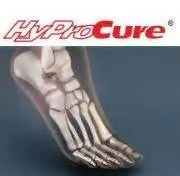Foot Therapy for Sports Injuries
Whether in practice or in the game, athletes put their bodies through great stress. Some sports tax and demand more from the body than others, but every sport has an element of inorganic movement or unnatural motion. For ample, in softball, a pitcher winds up and flings her body with incredible amounts of dexterity in order to get the most ideal velocity out of her pitches. This motion, incredibly taxing on the body, can cause serious injury.
With regards to athletic injuries, one of the most common issues resides in the feet. Whether a damaging fracture that leaves athletes sidelined or simple turf toe, foot injuries can be very frustrating and painful. Regardless of sport, athletes require use of their feet in some fashion. This is why foot therapy is so vital in order to get athletes back on the right track and training again to return to the field.
No matter the injury, the best way to speed up the recovery period is to receive physical therapy. Physical therapy as a founded practice has proven to work for millions of people. Physical therapists are trained specifically to help people return to proper form from any injury, having gone through years of schooling in order to do so.
During physical therapy, you will go through organized training in order to get back into form. Sometimes training can be quite difficult, especially in the beginning when there is more pain and the foot feels awkward. To alleviate that you will do basic twisting and stretching exercises in order to get flexibility and foot mobility back up. The therapist will also massage the injured area in order to activate and relax muscles. Over time you will eventually move up to strengthening exercises, designed specifically so that activation of the injured area is ensured.
Foot therapy for sports is a modern science miracle. Devoid of fancy chemicals and terminology, physical therapy is an evidence based practice that is well designed as any other. Due to huge advancements and knowledge of muscles and joints, physical therapists can turn catastrophic injuries around so athletes can return to the game once more.
What to Know About a Broken Toe
Trauma to the foot, especially the toes, can occur in many ways. Banging them, stubbing them, or dropping something on them are a few different ways this trauma can occur. Given the fact that toes are positioned in front of the feet, they typically sustain the brunt of such trauma. When trauma occurs to a toe, the result can be a painful break or fracture. Another type of trauma that can break a toe is repeated activity that places stress on the toe for prolonged periods of time.
Broken toes can be categorized as either minor or severe fractures. Symptoms of minor toe fractures include throbbing pain, swelling, bruising on the skin and toenail, and the inability to move the toe with ease. Severe toe fractures require medical attention and are indicated when the broken toe appears crooked or disfigured, when there is tingling or numbness in the toe, or when there is an open, bleeding wound present on the toe.
Generally, a minor toe break will heal without long-term complications, but it is important to discontinue activities that put pressure on the toe. It is best to stay off of the injured toe and immediately get a splint or cast to prevent any additional movement of the toe bones. You can also immobilize your toe by placing a small cotton ball between the injured toe and the toe beside it, then taping the two toes together with medical tape. Swelling can be alleviated by placing an ice pack on the broken toe directly as well as elevating your feet above your head.
Severe toe fractures may be treated with a splint, cast, and in some cases, minor surgery; especially when the big toe has been broken. Due to its position and the pressure it endures with daily activity, future complications can occur if the big toe is not properly treated. Pain associated with minor toe fractures can be managed with over-the-counter pain medications, and prescription pain killers may be necessary for severe toe fractures.
The healing time for a broken toe is approximately four to six weeks. In severe cases where the toe becomes infected or requires surgery, healing time can take up to eight weeks or more. While complications associated with a broken toe are immediately apparent, it is important to note that there are rare cases when additional complications, such as osteoarthritis, can develop over time. You should immediately speak with your podiatrist if you think you have broken your toe due to trauma, as they will be able to diagnose the injury and recommend the appropriate treatment options.
How to Prevent Running Injuries
Many common running injuries are caused by overuse and overtraining. Several common injuries can occur due to running. When the back of the kneecap starts wearing away and starts causing pain in the knee, this is commonly referred to as runner’s knee. Runner’s knee can occur because of decreased strength in the quadricep muscles or shoes that do not offer proper support to the inside of the forefoot. Runner’s knee usually is treated with strengthening exercises focusing on the quad muscle and sports orthotic. To prevent runner’s knee, efforts should be focused on hip strengthening. Physical therapy is also beneficial in helping to learn the best exercises to heal runner’s knee. To prevent runner’s knee, strengthen the quad muscles to keep the kneecap aligned.
Overtraining is one cause of a common running injury called iliotibial band syndrome, which occurs when the iliotibial band gets irritated, causing pain and discomfort to the outside knee area. Another common running injury is known as plantar fasciitis, which occurs when the bone in the foot becomes inflamed and irritated. This injury primarily causes pain in the foot. Causes can include a high arch, incorrect footwear, tight muscles and flat feet. The best way to avoid plantar fasciitis is stretching and proper footwear.
Stress fractures are a common injury for runners. These fractures can occur because of overtraining, lack of calcium or running style. In runners, it is common for stress fractures to occur in several locations including the inner bone of the leg, the thighbone, the bone at the base of the spine and the toe bones in the foot. The best approach to preventing stress fractures are proper footwear maintenance and running on a surface with enough “give” to absorb some of the shock produced during running.
Besides overtraining, other causes of these common running injuries are poorly fitting footwear, irregular biomechanics, and lack of flexibility and strength. The best way to avoid running injuries is to prevent them. Fortunately, each of these common running injuries can be prevented. To avoid running injuries it is highly recommended to wear only footwear that fits properly and that suits your needs. Running shoes are the only protective gear that runners have to safeguard them from injury; therefore, choosing the correct footwear for running is important. It is important, too, to think about other aspects of your running routine like training schedules, flexibility and strengthening, and tailor them to your needs in order to minimize the possibility of injury. Regular stretching before and after running should be considered also when trying to avoid running injuries. Stretching keeps muscles limber resulting in greater flexibility.
Ankle Sprains
Ankle sprains can be a serious injury that should be given immediate attention and care, despite not being as severe as a broken ankle. An ankle sprain can lead to a significant amount of pain, as well as limited mobility. They are often characterized by swelling and discoloration of the skin, which occurs when the ligaments are stretched beyond their limits.
The simple act of walking can sometimes cause a sprain, which makes them a very common injury for anyone. They occur when the ankle twists in an awkward way or rolls over itself, causing a pop or snap in the tendons around the ankle. Some people are more at risk than others, including athletes who continually push their bodies to the limits and also people who have previously suffered accidents to the feet, ankles, or lower legs.
Most of the time, an ankle sprain is not severe enough to warrant rushing to the hospital. There are many at-home treatment options available to you, including propping the leg up above your head to reduce blood flow and inflammation, applying ice packs to the affected area as needed, taking over the counter pain relievers and anti-inflammatory medication, using an ACE bandage to wrap and support the injured ankle, and most importantly, remaining off your feet until the ankle has fully healed.
Despite this, an ankle sprain can turn into a severe injury that might require hospitalization. If the ankle ligaments or muscles are damaged from a tear or rip, that is one sign that the sprain is severe enough to warrant going to the hospital and possibly having surgery done. Even after the surgery, the recovery process can be long, involving rehabilitation sessions administered by a podiatrist to get your ankle back to full health.
The severity of your sprain might become apparent if you are unable to stand or walk, non-stop pain is occurring over a prolonged period of time, swelling is much more severe than initially present, or if you start to experience tingling or numbness. These signs might show that your ankle sprain might actually be a broken ankle, an injury that requires immediate medical attention.
While not completely avoidable, ankle sprains can be curbed with some preventative treatment measures. These include wearing appropriate fitting shoes that not only provide a comfortable fit, but also ankle support. It is also recommended to stretch before doing any kind of physical activity, as this will help lower your body’s chance for an injury.













